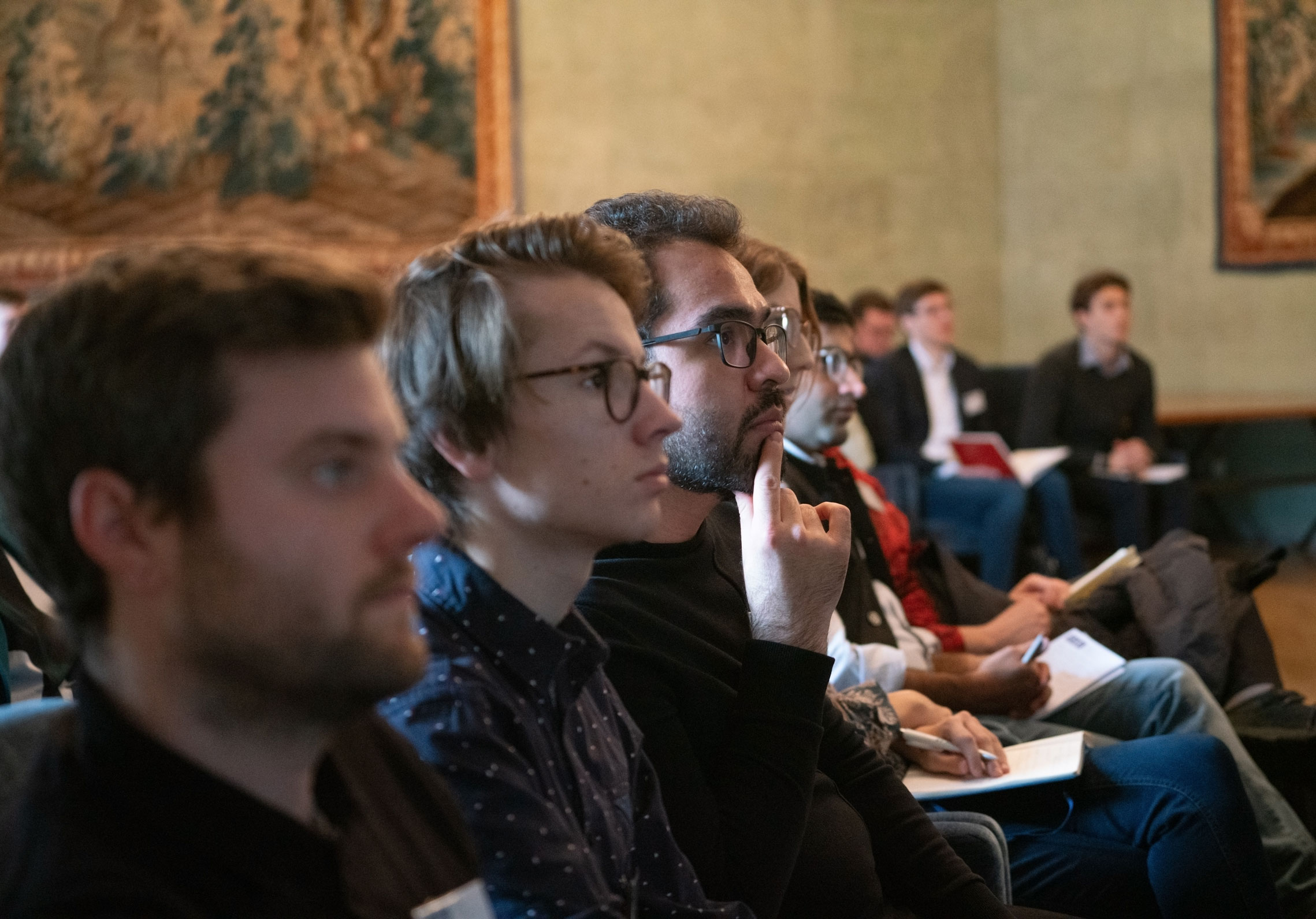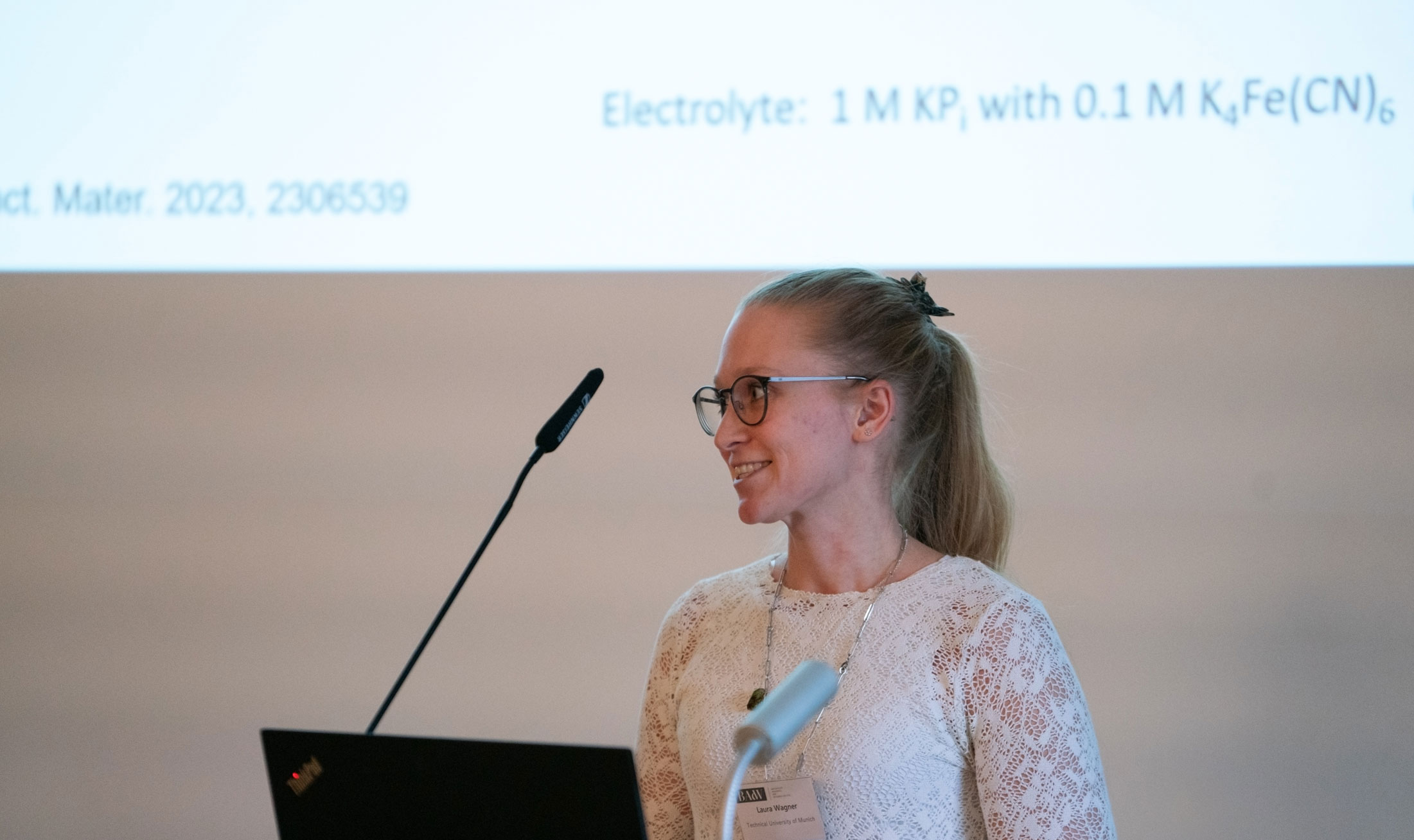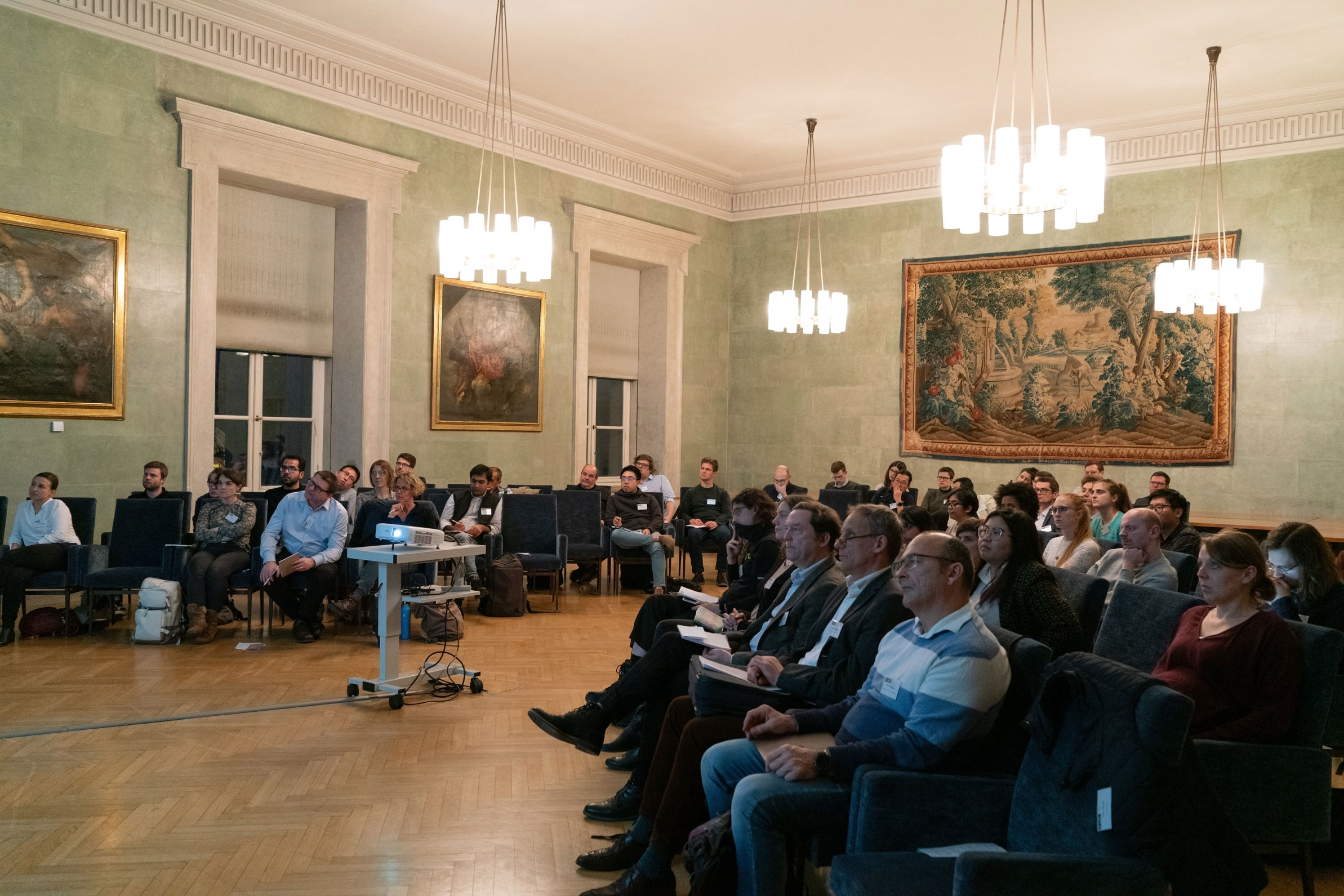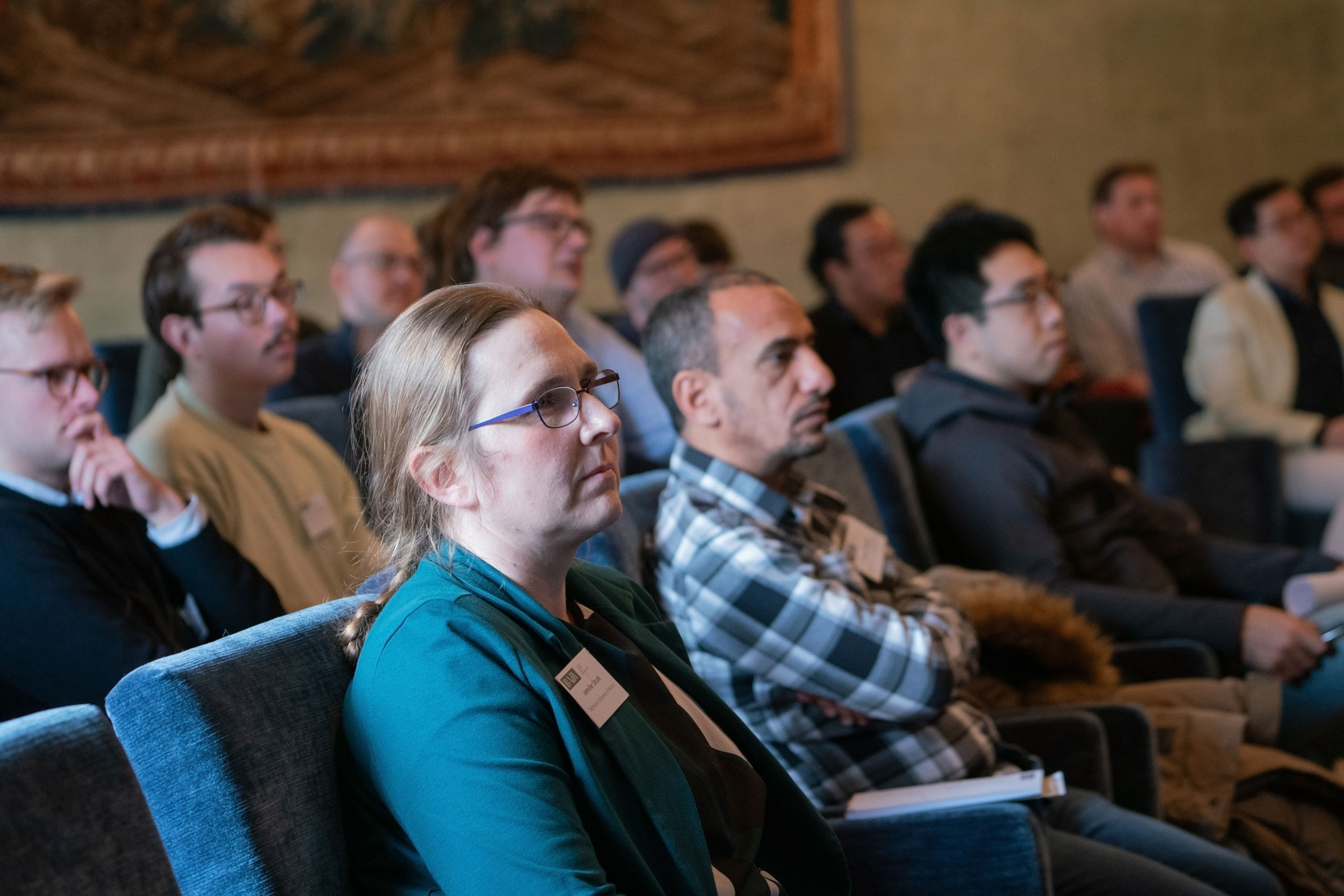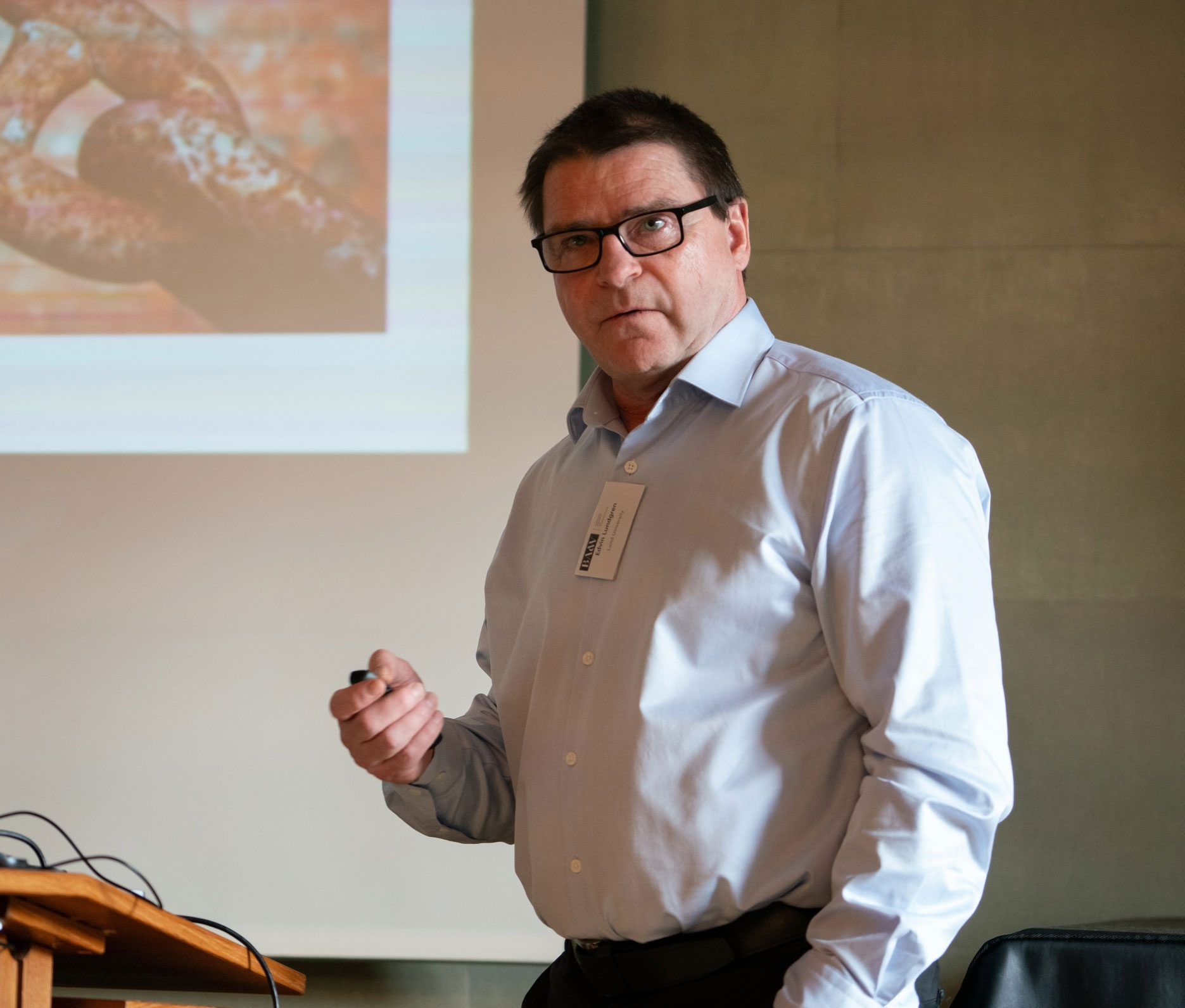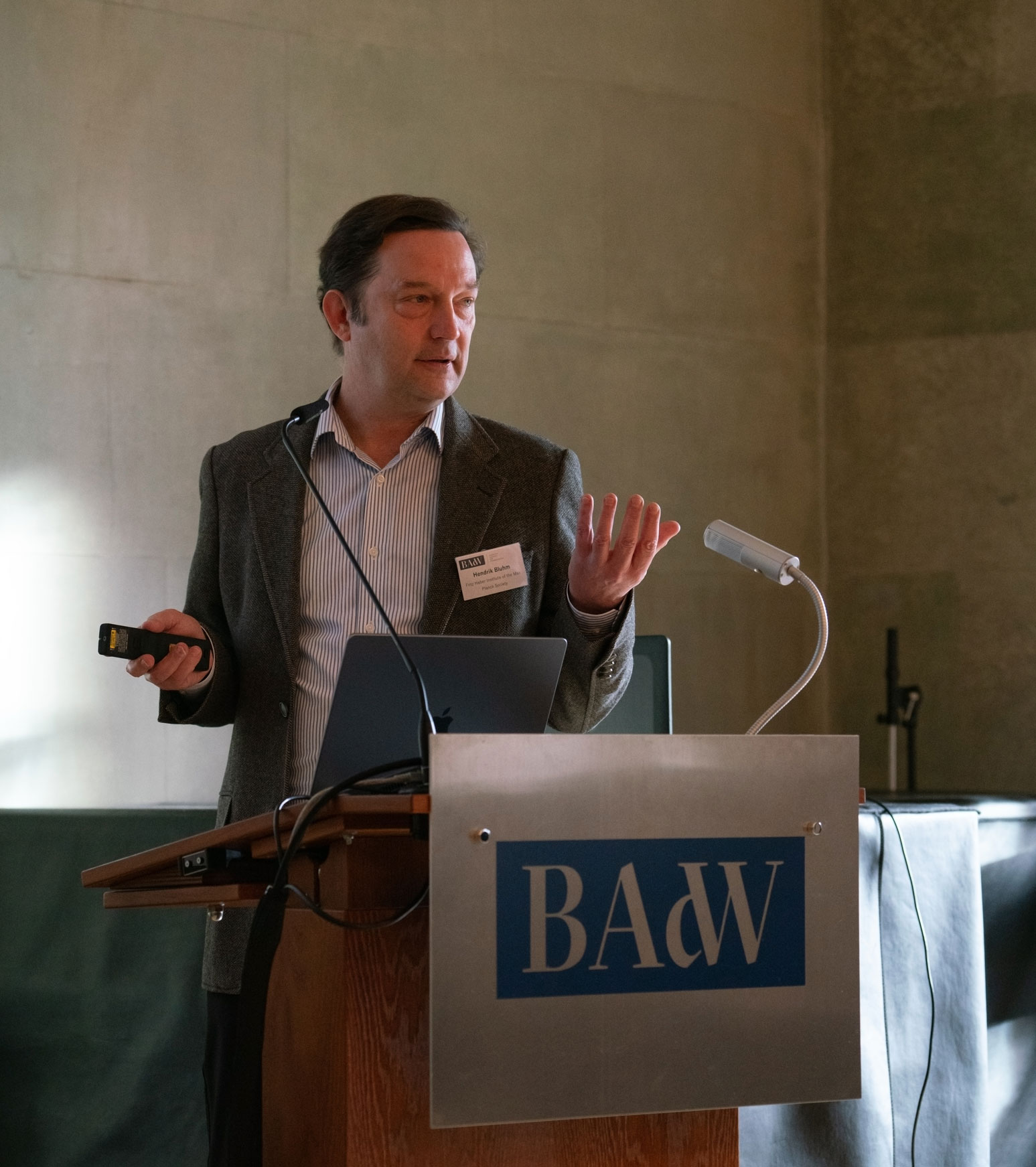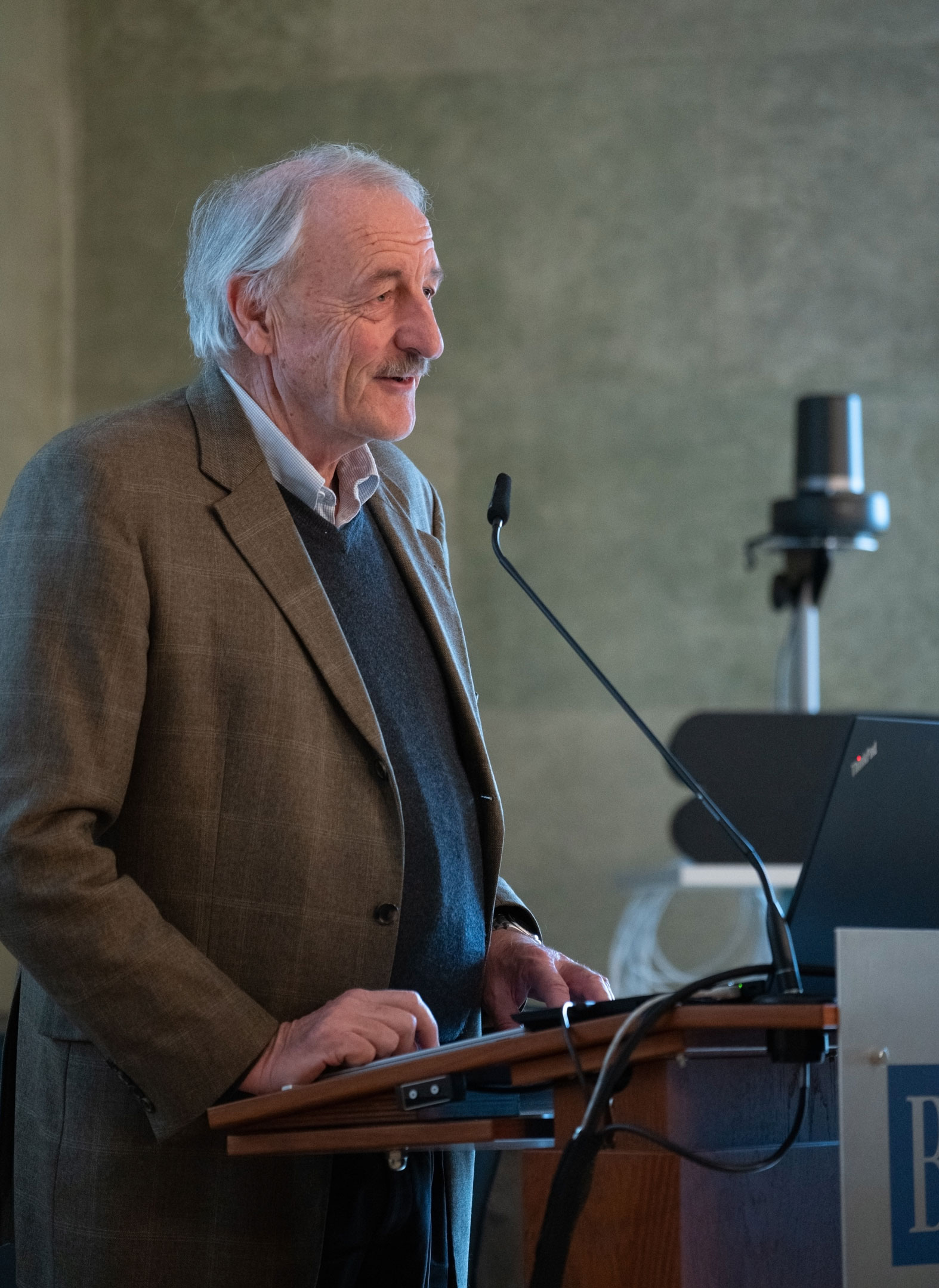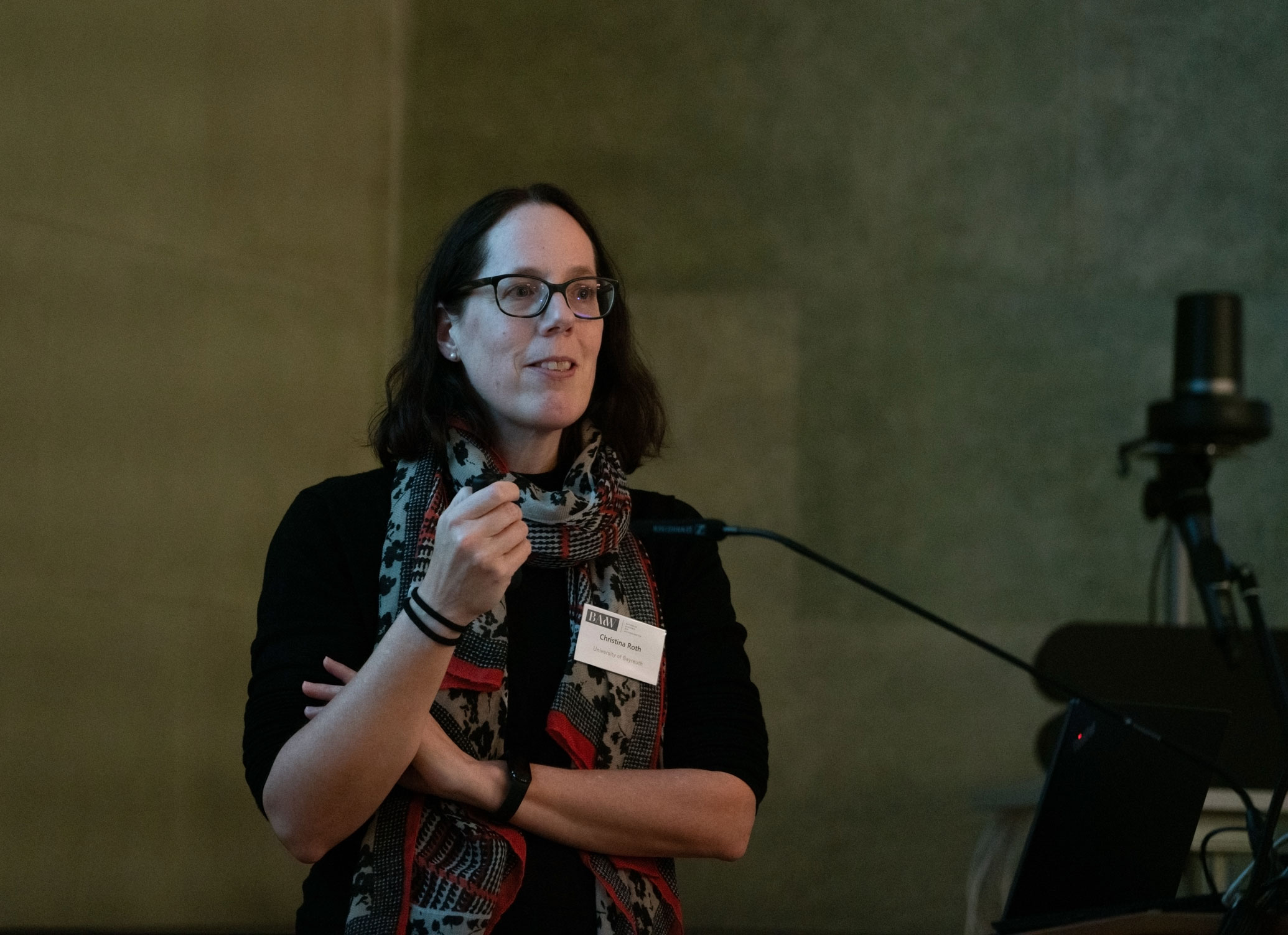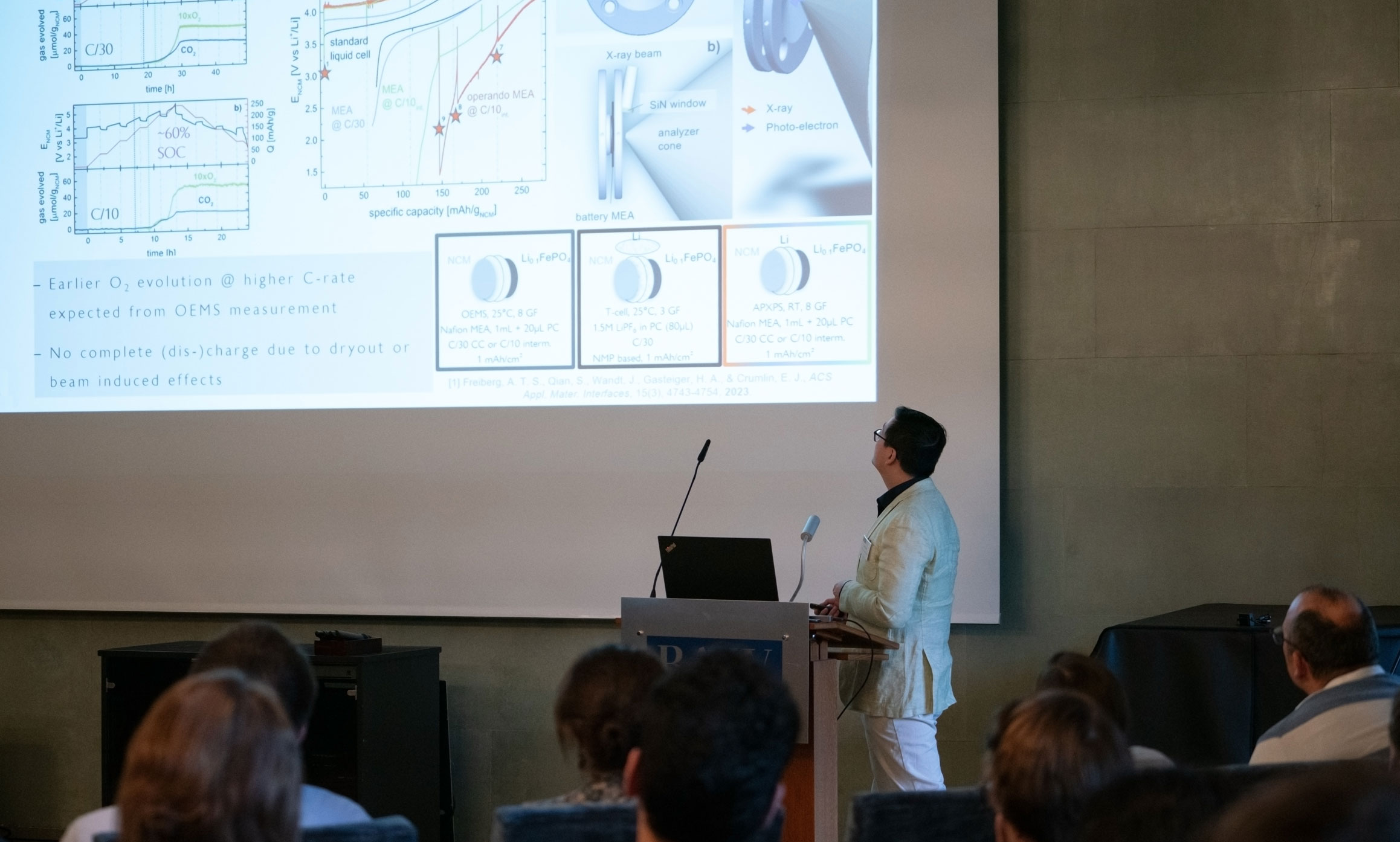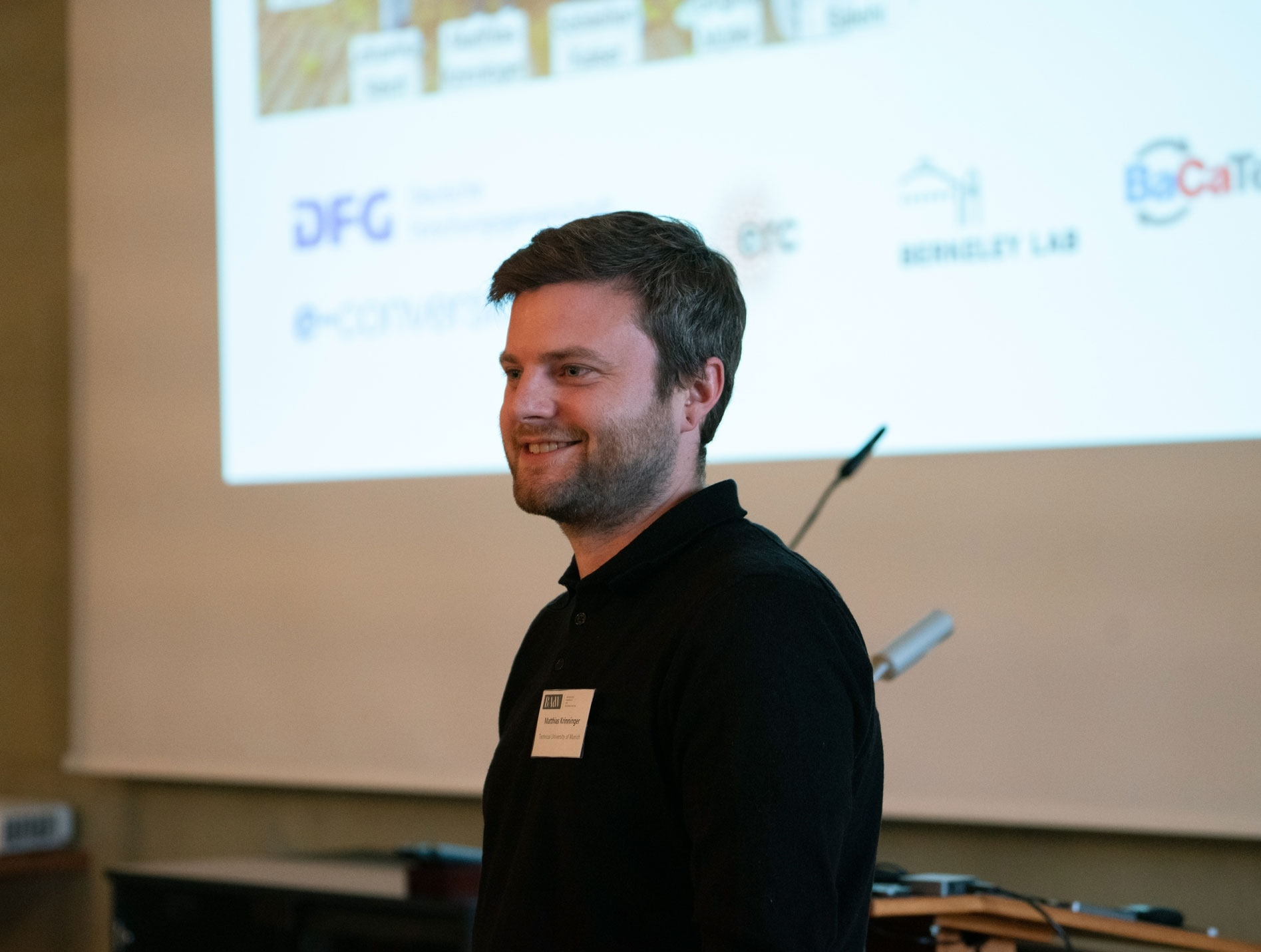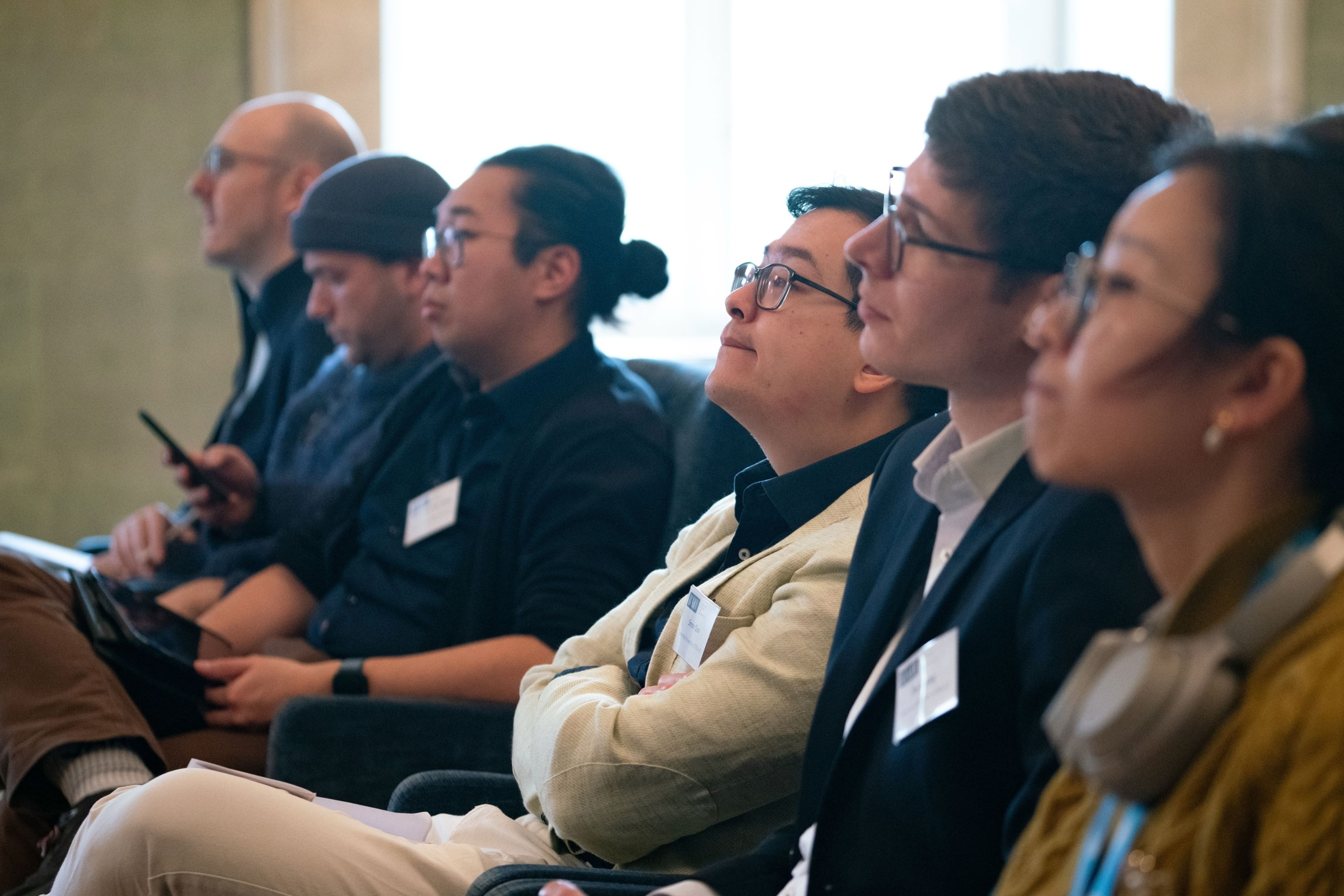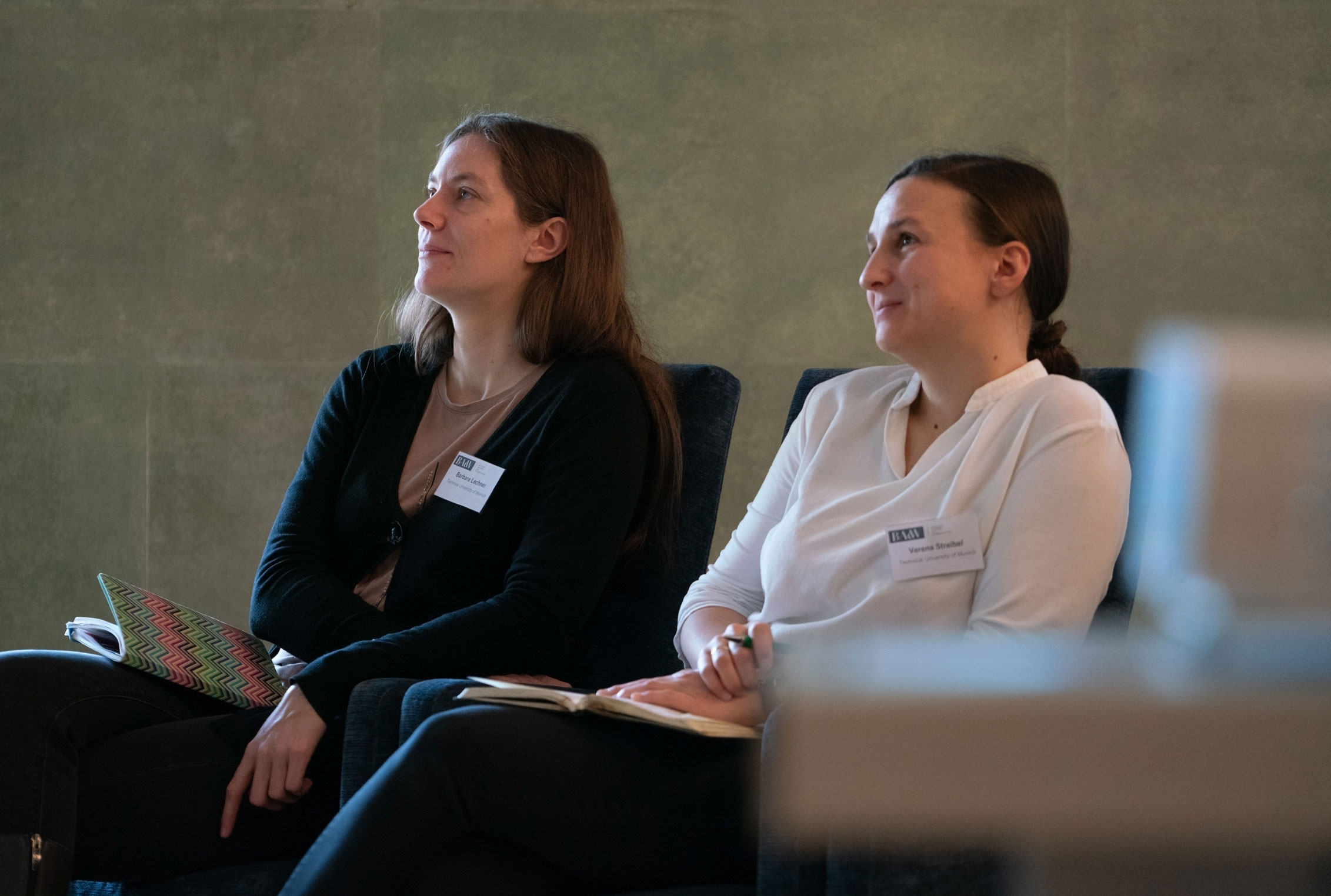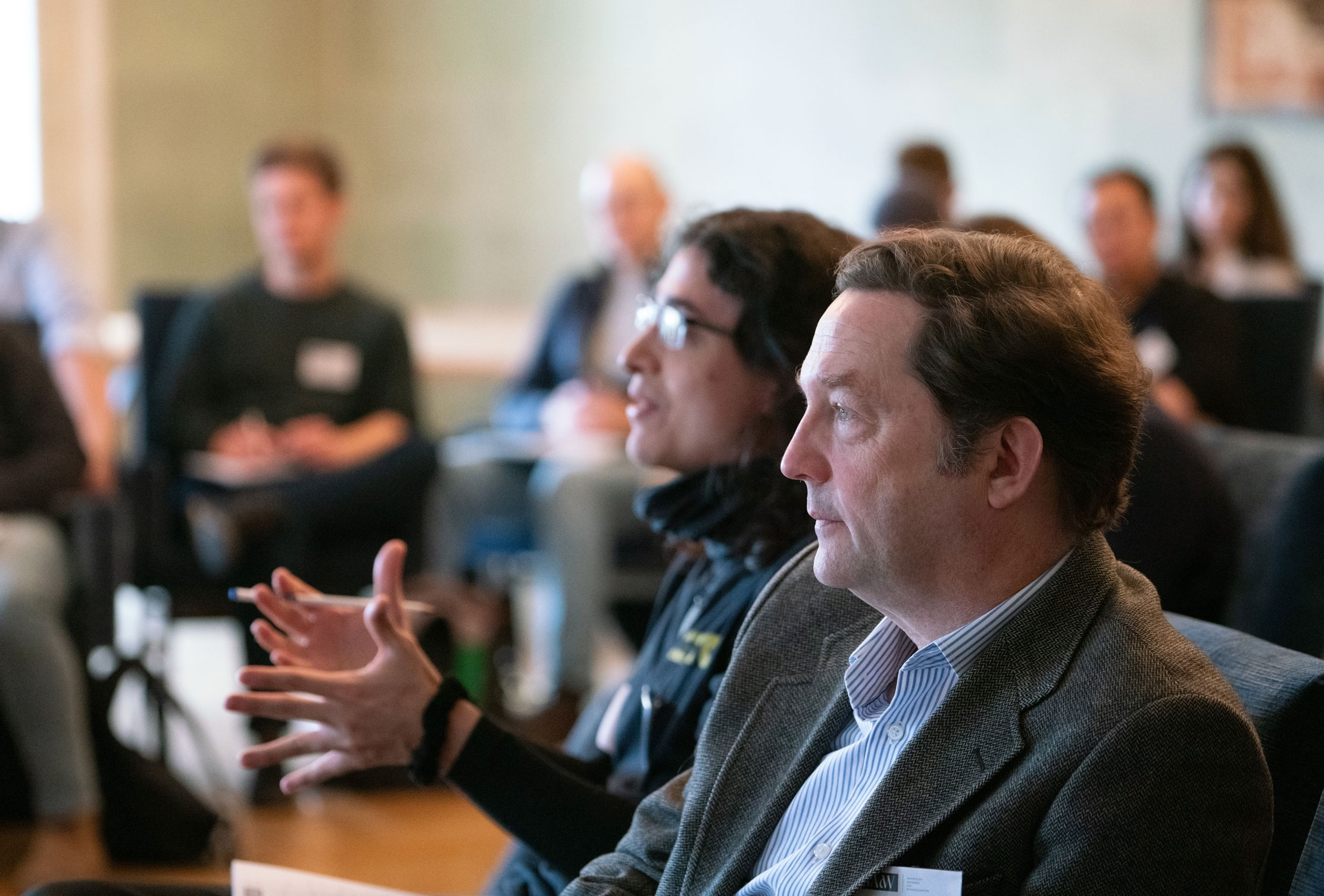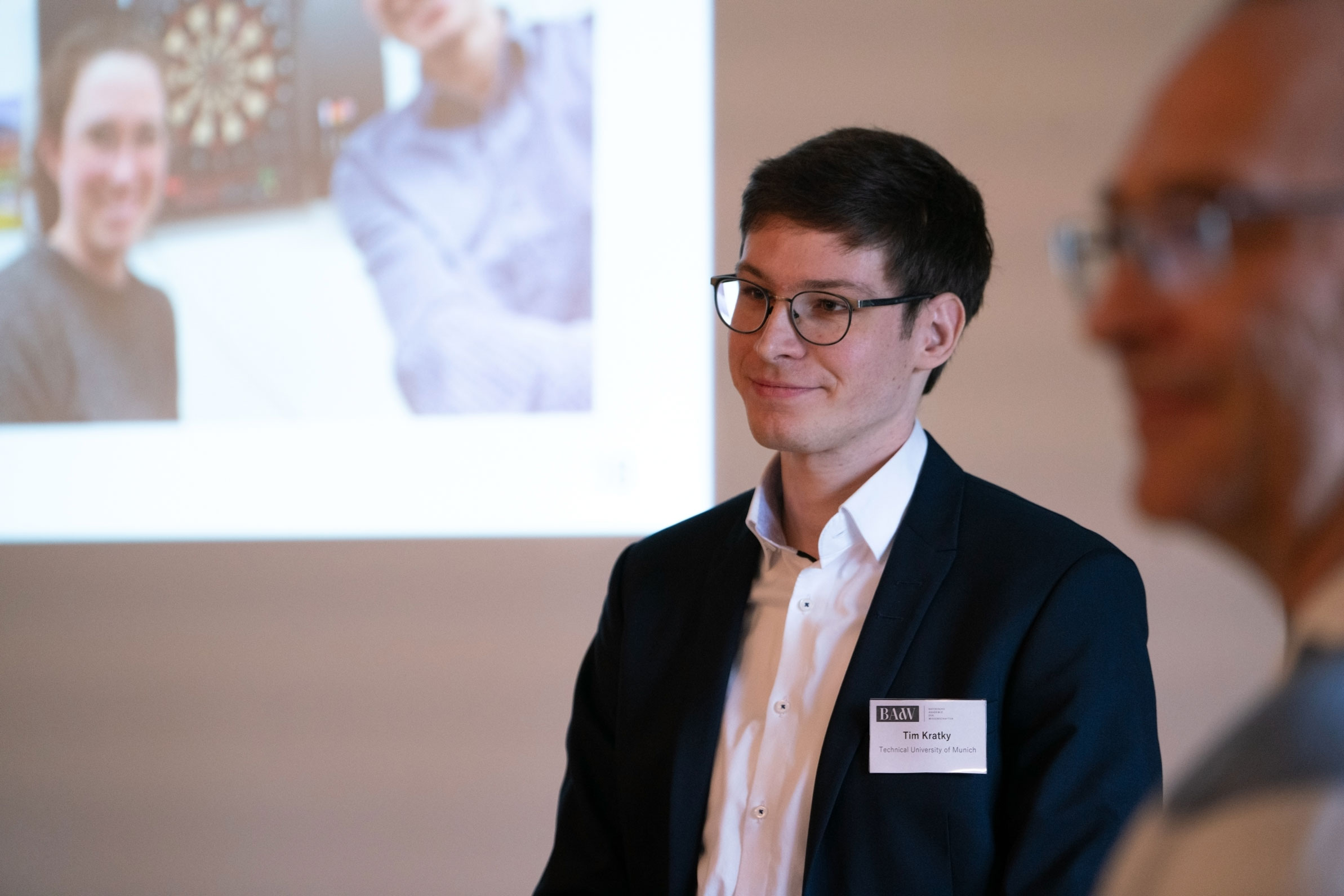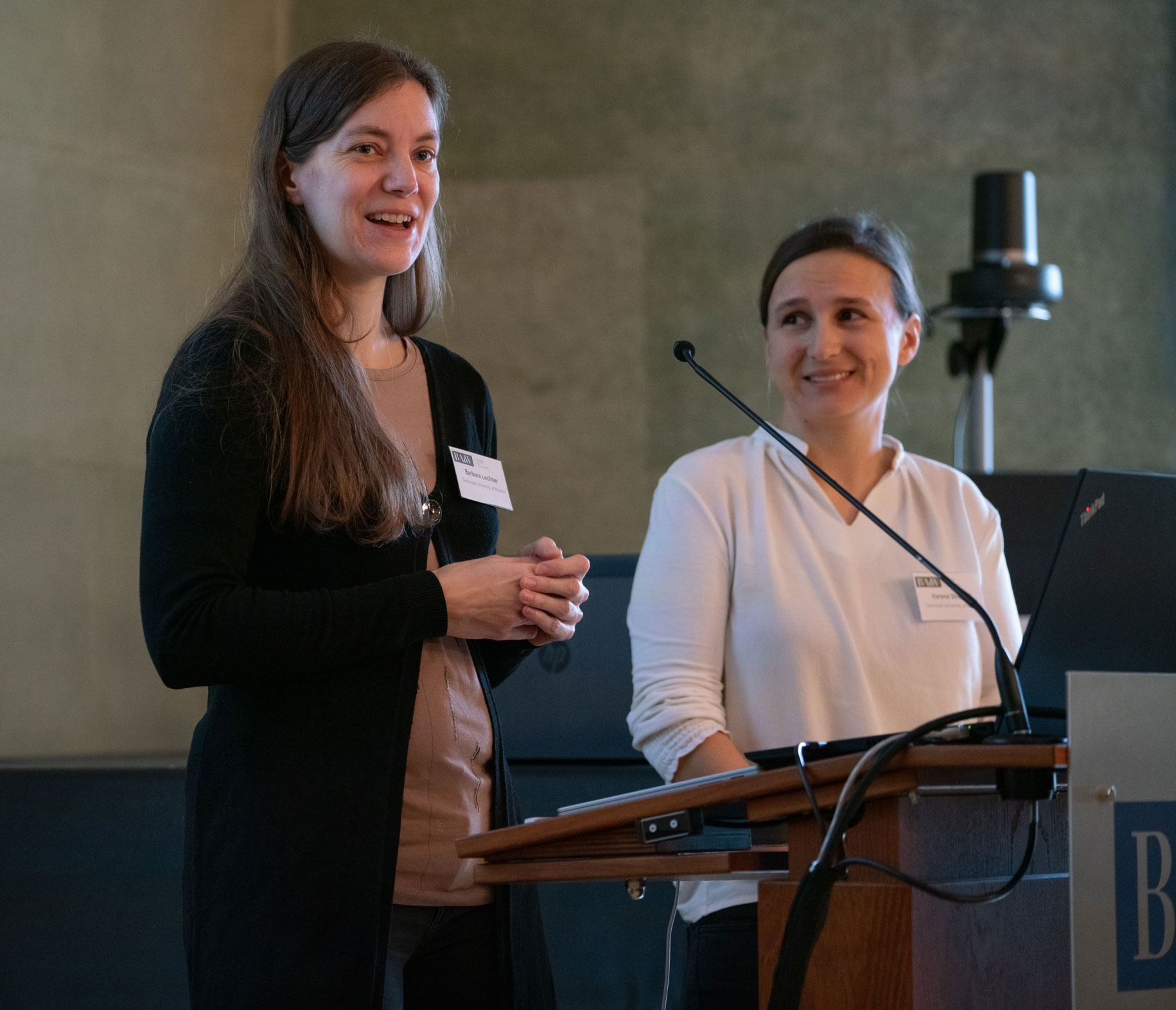
Prof. Barbara Lechner and Dr. Verena Streibel warmly welcomed the participants to the kick-off and workshop event.
A unique technology has enriched the research infrastructure of the Cluster of Excellence e-conversion. It is a near-ambient-pressure X-ray photoelectron spectroscopy (NAP-XPS) setup with three X-ray sources (Al Kα, Ag Lα, Cr Kα) that will enable the study of surfaces and interfaces under reaction conditions. The new high-tech method arrived at the Garching research campus shortly before Christmas and found its place in Prof. Barbara Lechner’s laboratories where it will be available to all e-conversion researchers as a facility. Barbara Lechner is a Rudolf Mößbauer Professor at the Technical University of Munich and heads the research group for Functional Nanomaterials at the Institute of Chemistry.
To celebrate the arrival of this exciting new research infrastructure, Prof. Barbara Lechner and Dr. Verena Streibel, both members of e-conversion and the Young Academy of the Bavarian Academy of Sciences and Humanities (BAdW), organized a kick-off event and workshop on “Advanced Spectroscopy for Energy Storage & Conversion”. The event took place on January 18 and 19 on the premises of the BAdW in the center of Munich. In his opening speech, BAdW President Prof. Markus Schwaiger gave a brief historical outline of the BAdW, presented the strengths of its research program, and paid tribute to the very talented scientists involved in the Young Academy of the BAdW, including the workshop organizers.
Big win for surface research
Before the specialist presentations began, the two organizers welcomed the more than 50 workshop participants, and both agreed: Surface research at the Technical University of Munich and the Cluster of Excellence e-conversion are gaining fantastic new opportunities with the NAP-XPS. “We are happy to offer interested groups and newcomers an introduction to the device and are delighted that this method is now available on a daily basis for our energy research,” said Dr. Verena Streibel, materials scientist at the Walter Schottky Institute of the Technical University of Munich and deputy spokesperson for the BAdW’s Young Academy. “In addition, the focus of this workshop is on the learning process that a new research device always entails. That’s why questions and discussions are also at the center of the workshop. In the end, we look forward to demonstrating the NAP-XPS during a lab tour at the Garching research campus,” said Prof. Barbara Lechner, who also thanked the speakers, the sponsoring institutions, BAdW, and e-conversion and acknowledged the support from the SPECS group.
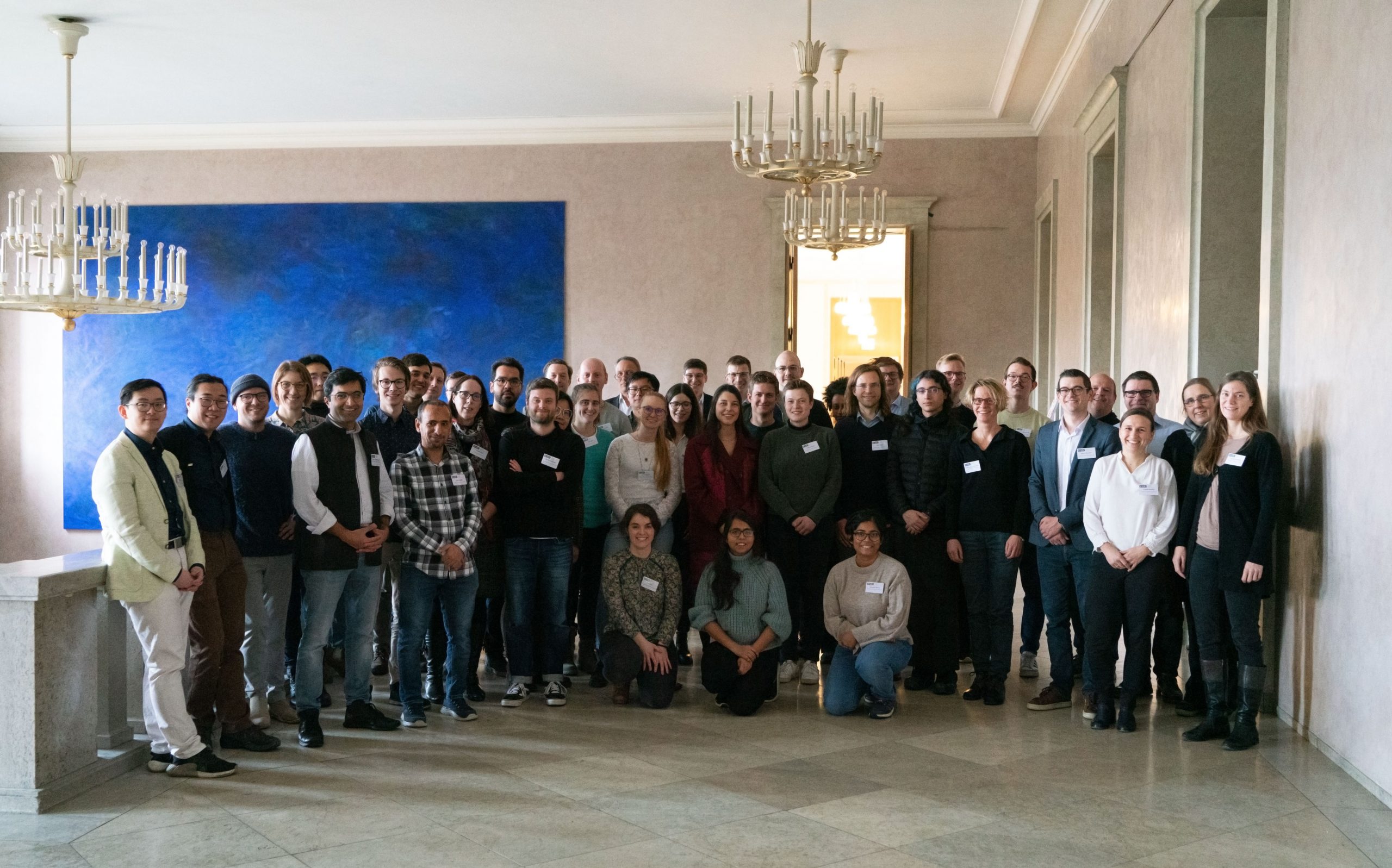
More than 50 participants took part in the workshop with international speakers and a laboratory tour at the research centre in Garching.
The two-day workshop offered a varied program of lectures by international researchers across Europe and the US, lightning presentations by postdocs and PhD students, a lab tour to Garching, and ample space for scientific exchange. “The workshop program covered nearly all aspects of energy research, including thermal heterogeneous catalysis, battery research, and (photo)electrochemical energy conversion. The speakers illustrated how spectroscopy can help us to better understand energy materials and elucidate their working principles”, concludes Lechner. Similarly, Streibel described the workshop as a huge success. “Both newcomers and experts in the field told us that they enjoyed learning about new scientific insights and that they gained new inspiration for their energy research. The venerable halls of the BAdW served as the perfect setting for fostering a fruitful atmosphere for discussions. We are now excited to start the NAP-XPS research in Garching and look forward to future collaborations within the Cluster of Excellence e-conversion“, she summarizes her workshop impressions.
Background Information
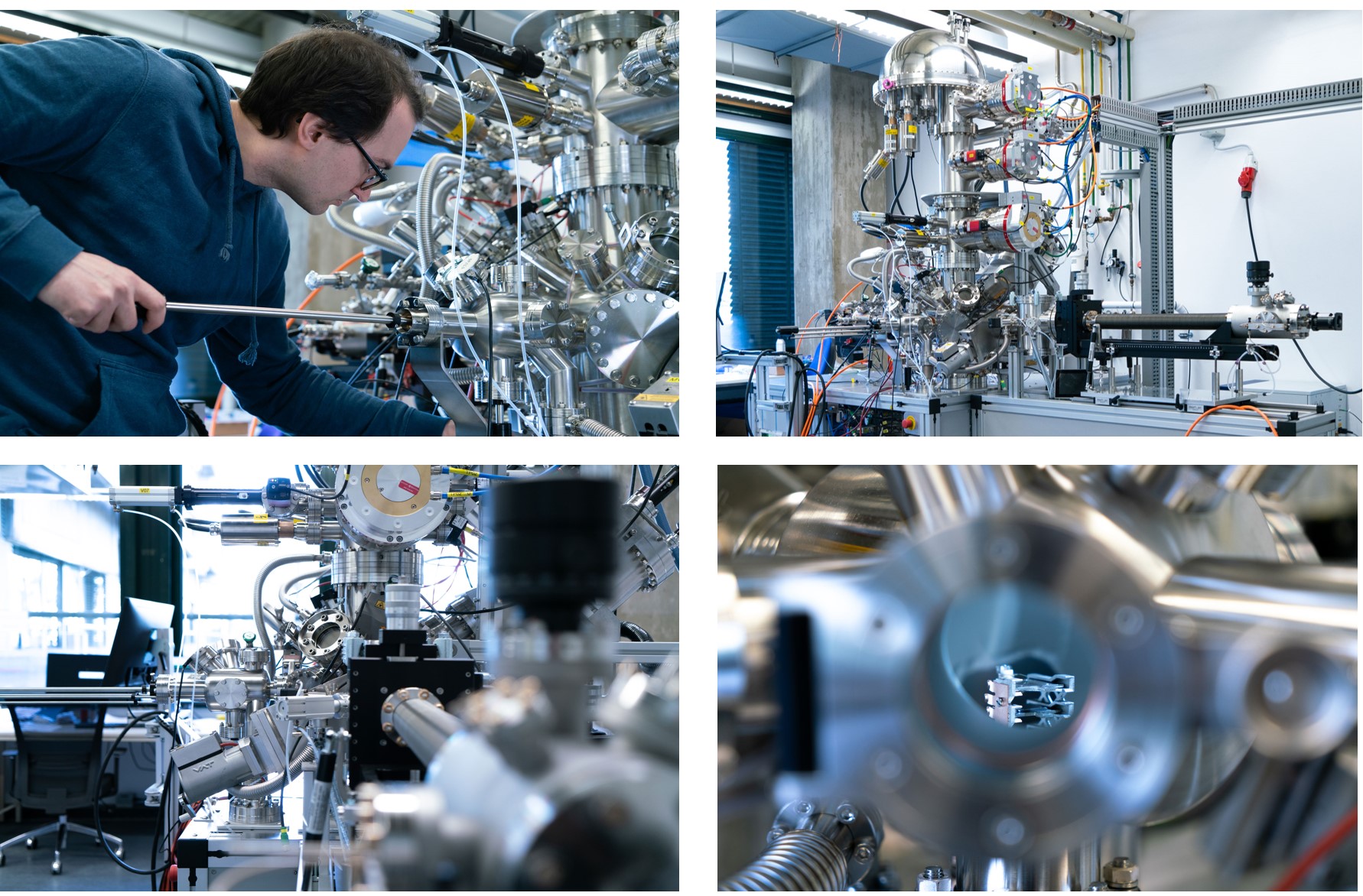
The new NAP-XPS offers unique opportunities to investigate surface processes, says Dr. Florian Kraushofer (top left), who works as a post-doc in Prof. Barbara Lechner’s group.
Why is NAP-XPS useful for e-conversion?
By exposing a sample to X-rays and analyzing the emitted photoelectrons, XPS offers insights into surface elemental compositions and chemical states. Traditional XPS analysis requires ultra-high vacuum (UHV) conditions and is therefore limited to investigating solid samples or low-vapor-pressure liquids.
Modern NAP-XPS overcomes UHV restrictions using a differentially pumped analyzer combined with an electrostatic lens system. This modification allows for the analysis of samples within diverse atmospheres. Over the past decade, NAP-XPS has been crucial in exploring fundamental processes at solid|gas or solid|liquid interfaces. It facilitates in-situ and operando studies under realistic working conditions, finding applications in areas such as electrochemical energy conversion and storage, medical materials, biological specimens, and processes at interfaces under reactive conditions like corrosion or catalysis. While traditionally mainly available at (synchrotron) user facilities, lab-based systems nowadays offer easier access to synthesis-supporting experiments on-site and allow for optimized geometries for solid|liquid interface experiments.
More information on the technique and instrument can be found on SPECS webpage.

